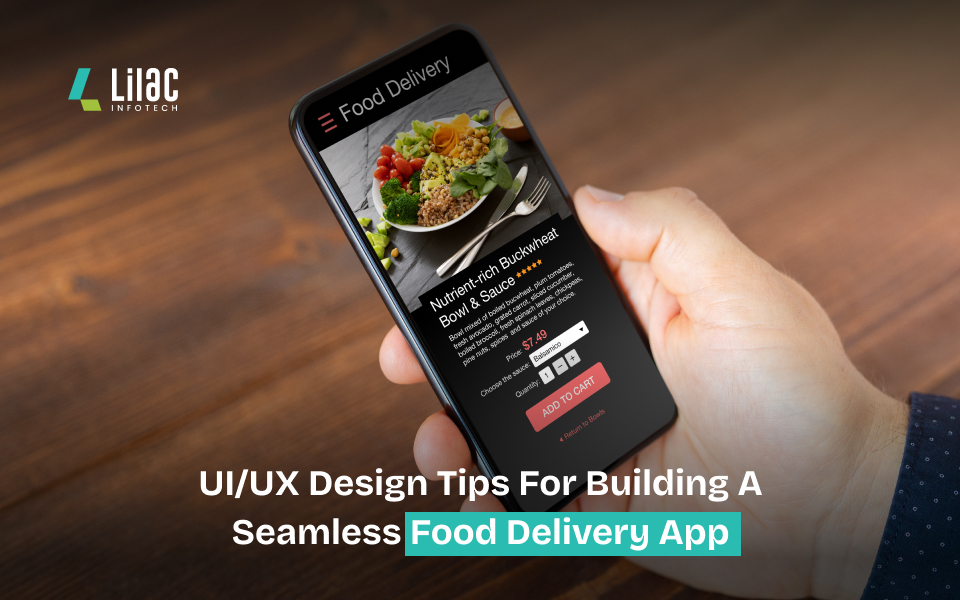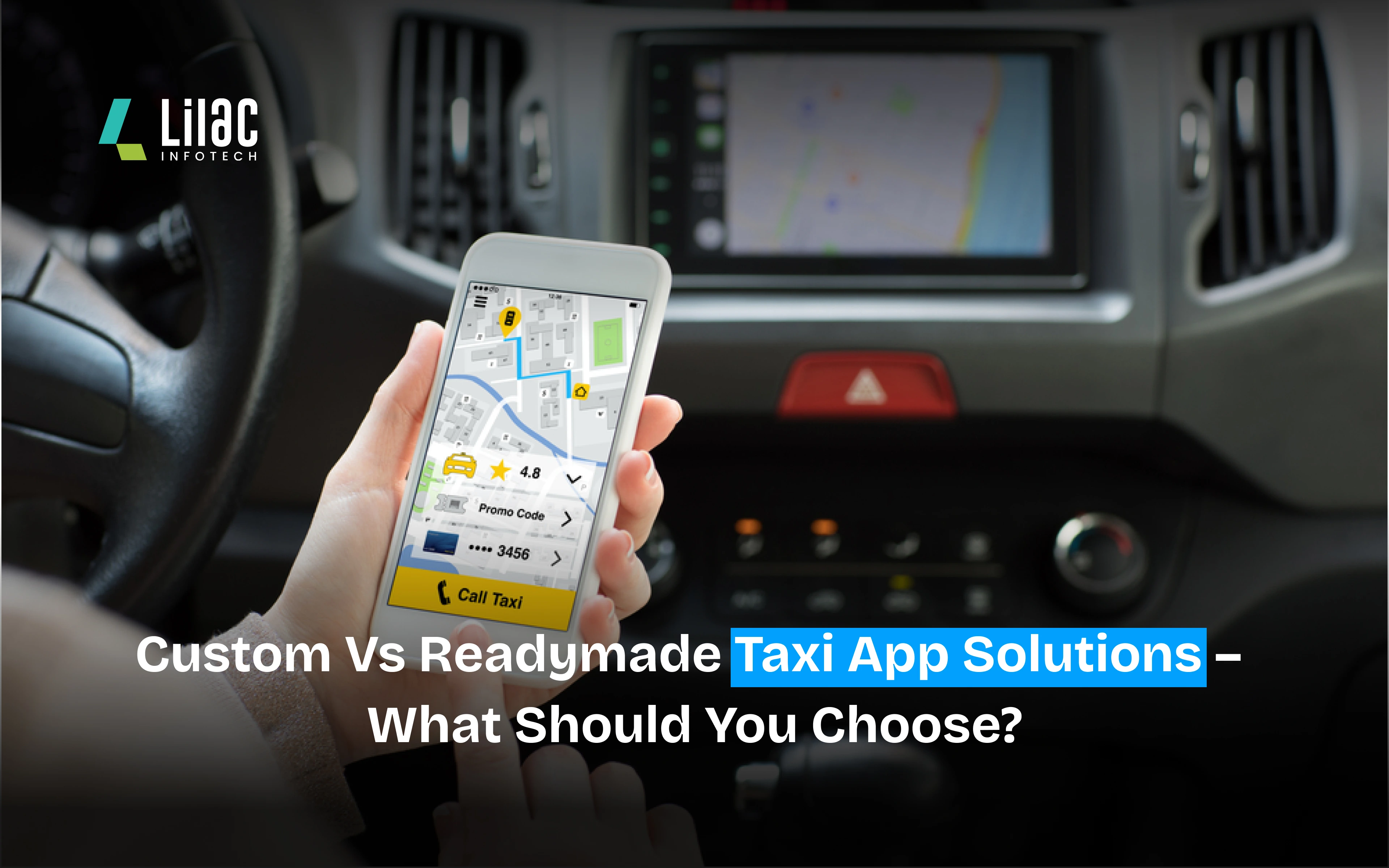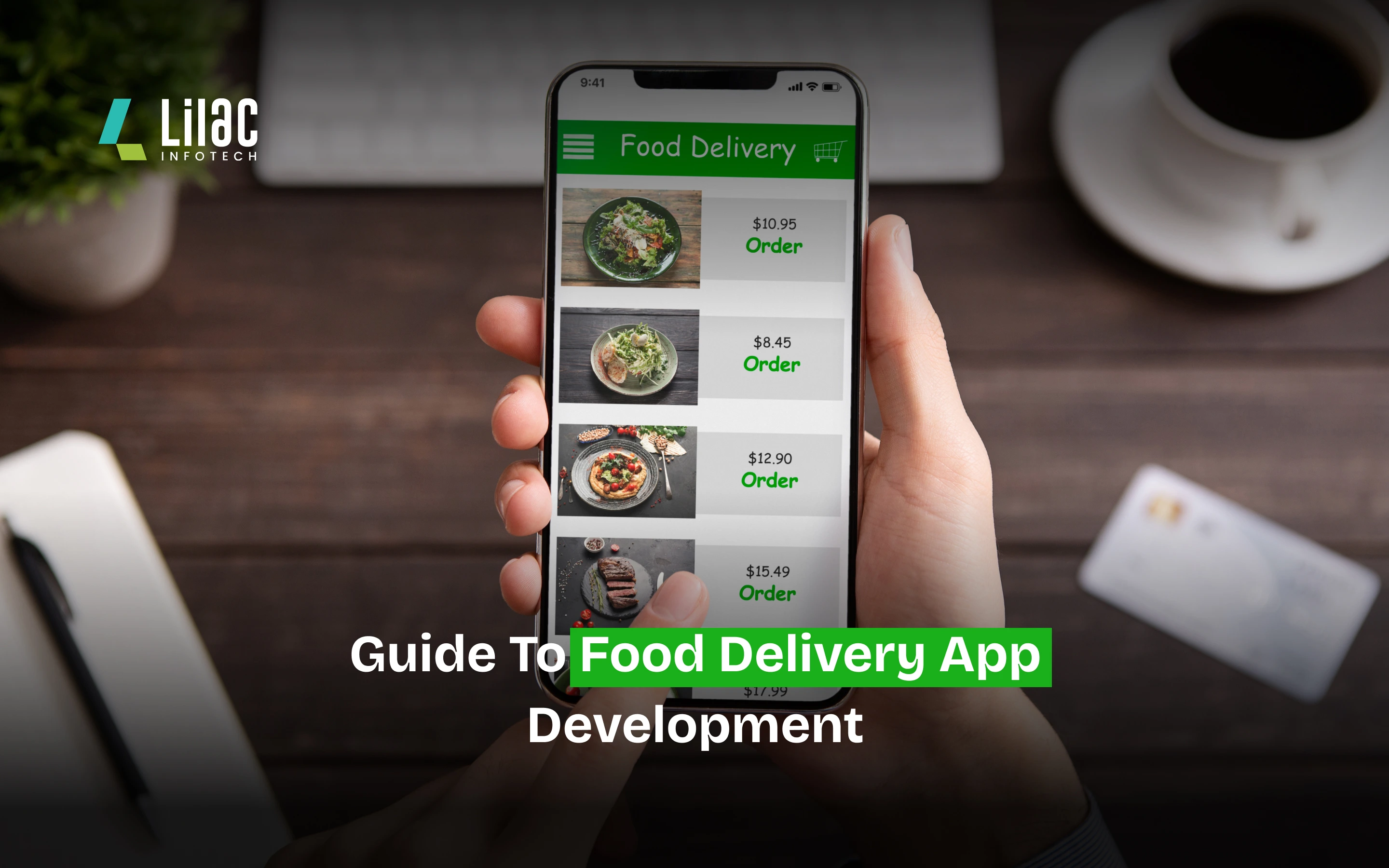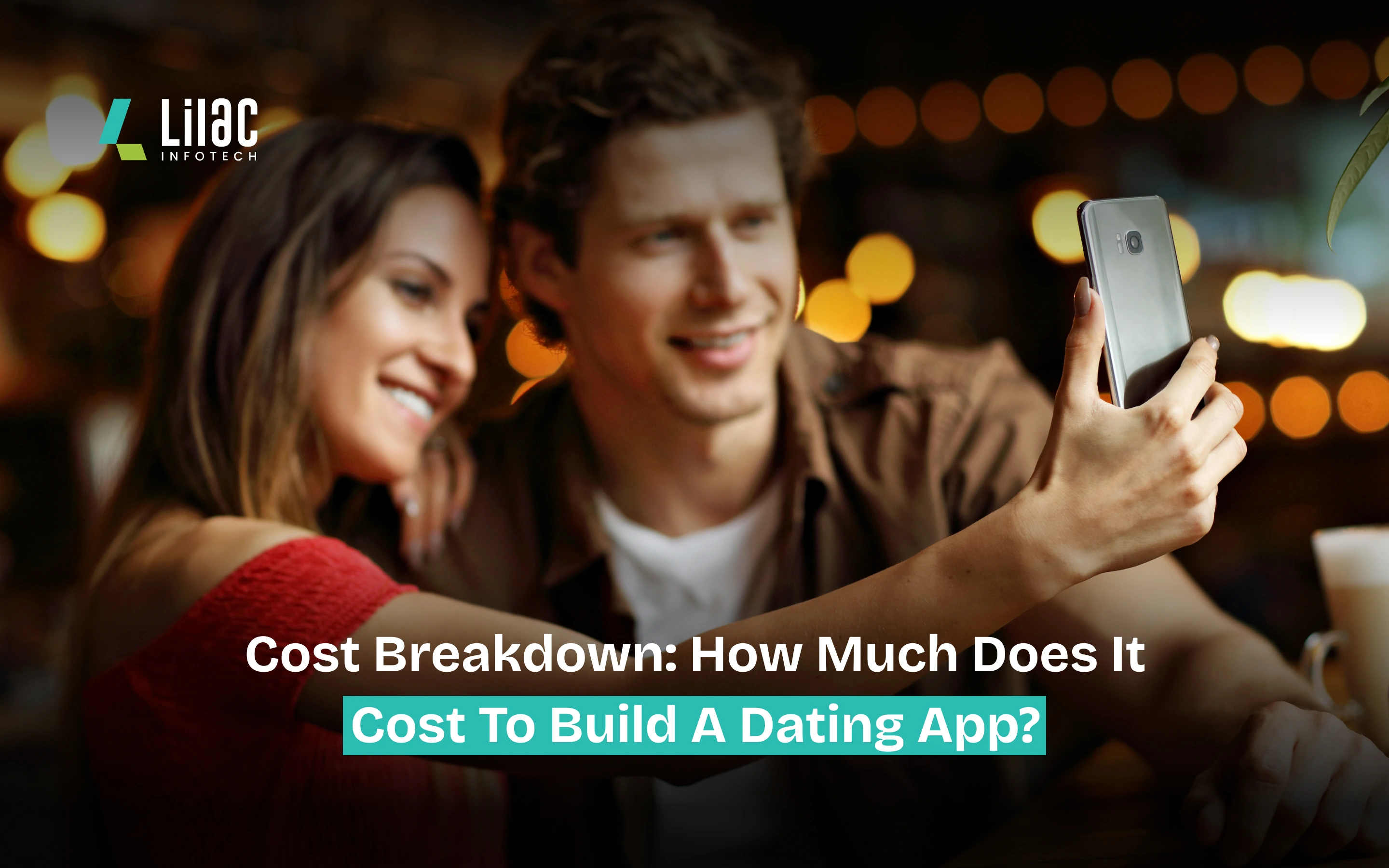
More than ever, user engagement is driven by ease in the fast-paced digital world of today. It has become second nature to be able to do everything with a few taps, whether we're ordering food late at night or organizing a supper with friends. This is where a meal delivery software may help by fusing design, technology, and user experience to make ordering food simple. You'll soon discover that the success of your app depends on both its functionality and user experience if you intend to reach this market. In this competitive market, your product's success or failure depends on its UI/UX design. Together, we will examine how to create a smooth food delivery software that makes users happy with each tap.
Why UI/UX Design Matters in Food Delivery Apps
When you or I open a food delivery app, we expect it to be fast, simple, and intuitive. From browsing restaurants to tracking delivery, each touchpoint needs to feel natural. Poor design frustrates users, while a well-structured interface encourages them to order again and again. A thoughtfully designed UI/UX ensures that the user journey is fluid, guiding them smoothly from discovering food to checking out without friction. In the highly competitive world of food delivery apps in India, design is no longer optional; it’s the foundation of user satisfaction and brand trust.
Understanding the User Journey in Mobile App Development
Before designing anything, you must first understand how users interact with your platform. The mobile app development process begins with mapping out the user flow from signing up to completing a purchase.
Let’s break down the common journey users take in a food delivery app:
Onboarding: Quick introduction or tutorial screens.
Restaurant Discovery: Search, filter, and explore menus.
Order Placement: Easy-to-navigate cart and customization options.
Payment: Secure and seamless checkout process.
Tracking: Real-time delivery tracking.
Feedback: Ratings, reviews, and support access.
Each step needs to be simple and rewarding. A user should never feel confused about what to do next; that's the essence of excellent UI/UX design.
Creating a Visually Appealing Interface
When it comes to designing a food delivery app, visuals play a crucial role. Food is inherently visual colors, textures, and presentation drives hunger and decision-making.
You can make your interface more engaging by focusing on:
- Color Psychology: Warm colors like red, orange, and yellow stimulate appetite and excitement.
- Typography: Use clean, readable fonts that reflect your brand tone.
- Icons & Imagery: High-quality food images and meaningful icons make the interface intuitive.
- Spacing: Don’t clutter! Adequate white space helps users focus better.
In mobile app development, clarity always wins over complexity. A minimal yet vibrant UI ensures users enjoy browsing, even before they place their first order.
Design Intuitive Navigation
A good food delivery app must make it easy for users to find what they want without extra effort. You and I both hate when we have to tap endlessly just to locate a dish or restaurant.
Here’s how you can improve navigation:
- Simplify Menus: Group categories logically — “Cuisines,” “Offers,” “Top Picks,” etc.
- Sticky Navigation Bar: Keep key actions like “Cart,” “Home,” and “Profile” easily accessible.
- Search Optimization: Integrate smart search with suggestions, filters, and voice input.
- Personalized Recommendations: Based on past orders or location.
A user-friendly navigation design helps users complete their goals faster whether they’re hungry at midnight or in a rush during lunch hours.
Focus on Smooth Interactions and Micro-Animations
Micro-interactions are small animations or feedback actions that make an interface feel alive. Imagine seeing your cart bounce slightly when you add food or a cheerful confirmation when an order is placed. These details enhance the emotional connection between users and your food delivery app.
When used subtly, animations:
- Make transitions smoother.
- Indicate success or loading states.
- Improve overall app flow.
- Provide instant feedback for user actions.
These little touches create a delightful experience that keeps users engaged longer, one of the secret weapons in mobile app development.
Simplify the Ordering and Checkout Process
One of the biggest challenges in designing a food delivery app is ensuring a smooth checkout experience. Users abandon carts when they face too many steps or unclear pricing.
Here’s what to focus on:
- Guest Checkout Option: Don’t force sign-ups before ordering.
- Auto-filled Fields: Save addresses and payment details securely.
- Transparent Pricing: Display delivery charges, taxes, and tips upfront.
- Multiple Payment Options: UPI, wallets, cards, and COD are must-haves in food delivery apps in India.
- One-Tap Reorder: Allow repeat customers to reorder past meals easily.
The goal is to make users feel that ordering food is effortless like a conversation between them and the app.
Personalization and Smart Recommendations
As we both know, personalization is no longer a luxury; it's an expectation. When a food delivery app understands a user’s habits, location, and favorite cuisines, it builds a strong sense of loyalty.
You can implement personalization through:
- AI-driven suggestions: Recommending dishes based on time, weather, or previous orders.
- Location-based offers: Promoting nearby restaurants and special deals.
- User Preferences: Save dietary restrictions and spice preferences.
A data-driven design approach enhances user satisfaction and boosts retention. After all, who doesn’t love when an app “gets” them?
Designing for Food Delivery Apps in India
The Indian market for food delivery apps in India has unique challenges and opportunities. You and I can see how local factors influence user behavior. From diverse cuisines to regional payment systems, every detail matters.
Here’s what designers must consider:
- Language Localization: Include multiple Indian languages for better reach.
- Regional Cuisine Filters: Let users explore restaurants by state or specialty.
- Payment Adaptability: Integrate UPI, Paytm, PhonePe, and wallets popular in India.
- Low-bandwidth Optimization: Ensure your app loads fast even in areas with slow internet.
By designing for inclusivity and accessibility, you can make your food delivery app truly resonate with Indian audiences.
Building Trust Through Transparency
Trust is a major factor influencing whether users stay or switch to another best food delivery app. Transparency builds credibility, especially around delivery times, fees, and hygiene standards.
Here’s how to build trust:
- Display real-time tracking with map visuals.
- Show estimated delivery time clearly.
- Provide contactless delivery options.
- Highlight restaurant ratings and hygiene standards.
When users trust your platform, they’ll continue using it, even if competitors offer temporary discounts.
Integrating Feedback for Continuous Improvement
No matter how perfect your design seems, feedback is gold. Users often point out friction points that designers might miss.
You can:
- Add quick rating options after each order.
- Include a feedback button within the profile section.
- Encourage reviews with small rewards or discounts.
A feedback-friendly food delivery app evolves continuously and stays ahead of the curve.
Testing and Iteration in Mobile App Development
No great food delivery app was ever built in one go. Usability testing helps identify design flaws early. Before full deployment:
- Conduct A/B tests for layout and button placements.
- Observe real user interactions via prototypes.
- Gather analytics on drop-offs and clicks.
You and I know real-world data often tells a different story than design assumptions. Continuous iteration ensures that every update enhances user satisfaction.
Learning from the Best Food Delivery App Examples
Some of the best food delivery app platforms, like Swiggy, Zomato, and Uber Eats, are prime examples of strong UI/UX execution. Their apps are:
- Clean: Focused layouts without distractions.
- Fast: Smooth performance with minimal load time.
- Contextual: Relevant recommendations and offers.
- Engaging: Personalized experiences with loyalty programs.
By analyzing these leaders, we can identify patterns of success that any new app can emulate from color palettes to information hierarchy.
We, You, and the Future of Food Delivery App Design
You and I are part of a rapidly evolving digital ecosystem where expectations shift overnight. Designing a food delivery app isn’t just about aesthetics, it's about empathy.
We must think like the user:
- What will make them smile?
- What might frustrate them?
- How can we make ordering feel natural and personal?
When you design with empathy, users don’t just use your app; they connect with it.
Conclusion
UI/UX design isn’t a one-time effort; it’s an ongoing journey. The best-designed food delivery apps aren’t just functional, they're delightful. When you focus on simplicity, personalization, and emotional engagement, you turn casual users into loyal customers. In the world of mobile app development, attention to detail defines your brand’s identity. A smooth and seamless experience doesn’t just win users it keeps them coming back for more. So, as you begin designing your next food delivery app, remember: every pixel counts, every gesture matters, and every interaction is a chance to build trust. Let’s make food ordering as joyful as eating itself.
FAQs: UI/UX in Food Delivery App Design
1. Why is UI/UX design important for a food delivery app?
UI/UX design ensures that users can easily navigate, place orders, and enjoy the process. It makes the experience intuitive and satisfying.
2. What features make the best food delivery app successful?
Smooth navigation, real-time tracking, easy payments, and personalized recommendations are key to success.
3. How can I improve user engagement in my food delivery app?
Use micro-interactions, push notifications, loyalty rewards, and seamless UX flows to keep users engaged.
4. What are the UI/UX challenges for food delivery apps in India?
Local language support, regional cuisines, diverse payment options, and network optimization are major challenges.
5. How often should I update the design of my food delivery app?
Regular updates every 3–6 months help you stay aligned with user expectations and market trends.
6. What tools are best for designing a food delivery app?
Popular tools include Figma, Adobe XD, and Sketch for prototyping, while user analytics tools like Hotjar and Mixpanel help track engagement.



















Post a Comment